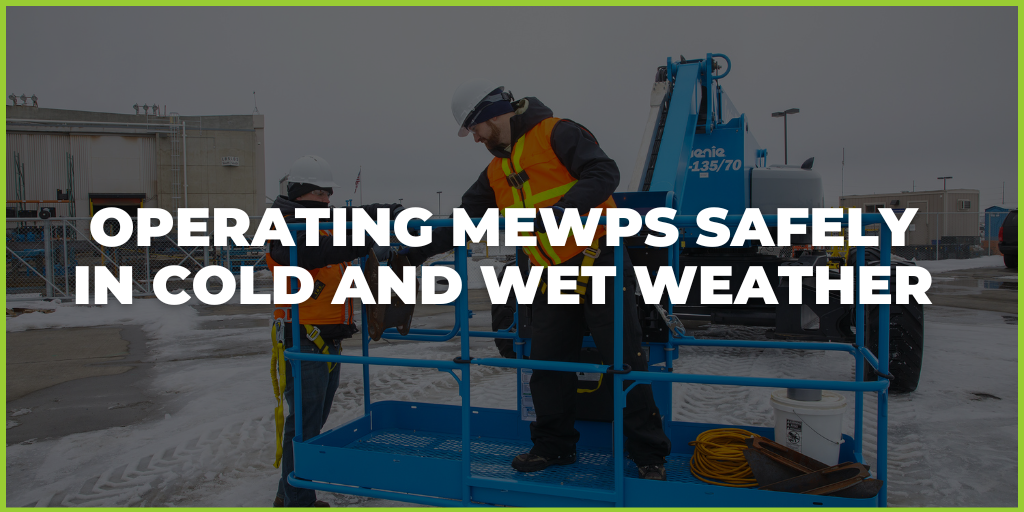A Mobile Elevating Work Platform (MEWP) is a machine that comprises of a work platform with controls, an extending structure and chassis. (BS EN 280:2013)
MEWPs are designed and built with safety in mind and are considered to be one of the most secure methods of accessing areas at height. While MEWPs generally bring more safety, they could also impose certain dangers if they’re not operated and maintained as per regulations and established safety procedures.
The consequences of the misuse of access equipment can be quite severe and can result in people getting entrapped between the basket and a fixed structure, the machine overturning or even the operator falling off the basket if not wearing a harness.
There are a number of steps that should be taken to ensure the safe use of MEWPs.
- Choosing the right equipment for your working at height needs, and seeking expert guidance where necessary.
- Arranging proper training for anyone who will operate the machine
- Establish a programme that combines daily visual and functional checks by the operators, regular inspections and servicing schedules completed by competent people (usually CAP Certified engineers)
- Ensuring all tasks using MEWPs are adequately risk assessed and method statements are prepared where relevant
- Create and maintain a healthy and positive safety culture
The Daily Pre-Use Inspection Check
According to the HSE, having a daily pre-use inspection of the equipment will help you establish whether the machine can be operated, adjusted and maintained safely. By following this procedure defects and deteriorations will be identified before they turn into health and safety risks that could impose serious dangers to the operators’ safety and predispose accidents to happen.
The results from daily checks should be recorded and kept on file to help protect your business should an accident happen, records should be kept until the machine undergoes its next thorough examination. The Provision and Use of Work Equipment Regulations 1998 (PUWER) outlines the circumstances where a Thorough Examination (inspection) is required:
- In cases where the safety of work equipment depends on the installation conditions, it should be inspected after installation and before first use, as well as after reassembly at any new location.
- At suitable intervals, where work equipment is exposed to conditions causing deterioration liable to result in dangerous situations.
- Each time exceptional circumstances (eg major modifications, known or suspected serious damage, substantial change in the nature of use) are liable to have jeopardised the safety of the work equipment.
In addition to PUWER, the LOLER regulations state that all MEWPs must undergo a mandatory Thorough Examination by a competent person every 6-months.
What should inspections cover?
Every equipment inspection needs to take into consideration the type of the equipment and the manufacturer’s recommendations. Inspections focus on the safety features of the machine which are essential for its safe operation. There are three levels of checks that you could take:
- Quick pre-use checks: mainly visual checks that show if there is anything noticeably wrong with the machine.
- Weekly checks: more in-depth inspection of the equipment to ensure continued safe functioning of the machine.
- More extensive examinations: fully testing and inspecting all safety features of the machine - these are taken every few months or at the very least every six months for the mandatory thorough examination by a competent and qualified person.
Who should carry out the inspections?
The inspection checks can be carried out by anyone who has sufficient knowledge and experience to do so. They must know exactly what to look at, what to look for and what to do if a fault is identified. The level of competence required varies for the different types of inspections. When completing an inspection the person must consider:
- The manufacturer’s recommendations.
- Any relevant industry advice.
- Their own experience of working with the equipment.
- LOLER and PUWER guidance
Daily Pre-Use Checklist
To help you work safely on a MEWP we have put together a daily pre-use checklist that highlights the most important areas, such as the hydraulics, tyres, chassis and stabilisers, to inspect for faults before using a machine. The information in the checklist is in accordance with the IPAF guidance and will help you notice any malfunctions prior to using the machine.





